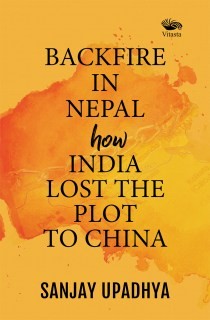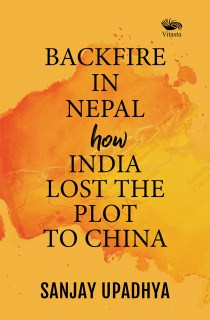As Nepal grapples with the deaths and destruction resulting from the March 28 protests, the country continues to debate its core demand: the restoration of the monarchy and Hindu state identity.
Two people lost their lives, at least 100 were injured, and numerous vehicles and businesses were set on fire during the protests, prompting the government to impose a curfew in parts of Kathmandu and deploy the army.
Two senior leaders of the monarchist Rastriya Prajatantra Party (RPP), along with several others, are in custody for incitement. At least a dozen individuals have been arrested for looting a department store. The police are currently searching for the chief protest organizer, Durga Prasai, who fled the scene. Some reports suggest he has crossed into India and is plotting his next moves.
The chaos, violence, and government crackdown initially raised questions about the future of the monarchy restoration project in Nepal. However, organizers have quickly regrouped. They appointed Jagman Gurung, the former vice-chancellor of the Nepal Academy, as the new head of the Monarchy Reinstatement Movement Committee. He succeeds Navaraj Subedi, who is currently under house arrest. Gurung will now serve as the committee's leader as royalist groups advance their protest plans.
The government and its allies immediately held former king Gyanendra accountable for the chaos, leading to a reduction in his state-provided security detail. Three days later, Prime Minister Khadga Prasad Oli informed parliament that Mr. Shah was responsible for the mayhem and asserted that the guilty would not escape punishment.
The government is facing pressure from the ruling parties and the opposition to arrest the ex-monarch and revoke his passport. The Kathmandu Municipality has imposed a fine of nearly Rs. 800,000 on Mr. Shah for the damage caused to public property and the environment during the protests. The ex-king has not issued a public statement regarding the violent protests or the allegations against him. Some reports indicate that he has been placed under informal house arrest.
The pro-monarchy movement in Nepal has intensified since February, following a message from Mr. Shah on Democracy Day. In his video message, the deposed monarch urged Nepalis to join him in 'saving the nation'. Critics of the monarchy, both within the government and outside, began voicing their opposition, which escalated into a crescendo following a rally to welcome the ex-king on March 9, as he arrived in Kathmandu from Pokhara. An estimated 25,000 people participated in the rally, stretching from Tribhuvan Airport to Mr. Shah's residence, located five kilometers away.
INDIAN ANGLE
The appearance of a poster featuring Yogi Adityanath, the chief minister of the neighboring Indian state of Uttar Pradesh, at the March 9 rally has raised concerns that New Delhi may be behind the royalist resurgence. Prime Minister Khadga Prasad Sharma Oli has made claims to that effect. Nepalis are also contemplating the roles of China, the United States, and the European Union – other influential players in Nepali politics – both before and after the protests.
India has not issued any official comment on the recent political developments in Nepal. However, reports indicate that it is closely monitoring how events unfold. Its broader policy emphasizes supporting Nepal's democratic process while protecting its strategic interests. Nonetheless, if protests escalate into violence or instability, India may strengthen security along the Nepal-India border to prevent any repercussions.
Some Nepalis believe that although India may not be particularly eager to see the restoration of the monarchy, New Delhi would favor the reinstatement of Hindu statehood within the current republican framework.
The immediate narrative following the March 28 anarchy suggested that the pro-monarchy cause had been severely damaged – perhaps irretrievably – by the actions of the protesters. However, video footage of the events began circulating on social media, fueling speculation that security forces had used excessive force before any genuine security threat emerged. Protesters claimed they were merely responding to police provocation and asserted that government and party provocateurs had infiltrated the demonstration.
The most horrific episode was the burning alive of a video journalist when the building he was working in was set on fire. The government blamed the protesters for the arson, a charge they vehemently deny. It is unclear whether the second deceased was a protester or a bystander. However, some witnesses claim he was a victim of police brutality in an area that did not pose a security risk.
Conflicting accounts about the events leading up to and during the protests have challenged the initial claim of a significant defeat for the royalist cause. The RPP and other groups have vowed to continue demonstrations as part of a broader uprising against the government and the federal secular republican system.
Recent royalist protests in Nepal have been driven by growing public frustration over corruption, mismanagement, impunity, and the government's general lack of direction. Even some members of the ruling parties and supporters of the republican system agree that the government must change its approach to win back public support. Nevertheless, they assert that reverting to a monarchy is not the solution.
Royalists view the monarchy as a symbol of national unity and stability. They seek to restore the institution along with Nepal's Hindu state identity, which was abolished in 2008. Some argue that Nepal has become excessively influenced by foreign powers, particularly India and Western nations, perceiving the monarchy as a way to reclaim sovereignty and national identity.
Republicans argue that a return to the monarchy is impossible because of insufficient political and public support, along with constitutional obstacles. They point out that while royalist protests have occurred, they suffer from weak leadership and lack nationwide momentum. Previous controversies surrounding the monarchy also hinder the restoration of the institution.
Supporters of the monarchy argue that these remarks reflect the last struggles of a system already endangered by corruption, nepotism, mismanagement, and incompetence. They recall that the monarchy was abolished in a highly irregular and authoritarian way.
In 2006, public demonstrations were organized in response to the royal coup of the previous year. Both political parties and the public urged the king to restore parliament and transfer power to an interim prime minister leading a coalition of mainstream political parties and Maoist rebels, who had engaged in a decade-long insurgency against the monarchy and political parties.
A secret five-point agreement – essentially a compromise between the king and the political parties – has been reported to have laid the groundwork for subsequent political developments. The parties, among other things, agreed to support Nepal's constitutional monarchy.
King Gyanendra appointed and swore in Girija Prasad Koirala, the president of the Nepali Congress, as the interim prime minister. His role was to sign a peace agreement with the Maoists and oversee elections for an assembly responsible for drafting a new constitution. The parties deny the existence of such an agreement, but former King Gyanendra confirmed in a televised interview several years ago that it had been reached.
The parties entrenched their positions over the following months, asserting that the assembly's initial meeting would abolish the monarchy. This development came after the king rejected backdoor negotiations to establish a 'baby king' – specifically, Gyanendra's grandson – or a powerless cultural monarchy.
While the major parties embraced a republican agenda and secured an overwhelming majority of seats in the 2008 elections, royalist candidates claimed that mass intimidation and, in many cases, outright violence deprived them of campaign opportunities. The monarchy was abolished by a decisive vote of 560 to 4 in the 601-member assembly.
Royalists argue that the parties abandoned constitutional monarchy at the whim of a few leaders, leaving the populace voiceless. However, in successive elections, monarchist organizations like the RPP have not performed very well.
Public consultations garnered significant support for upholding a constitutional monarchy and Hindu statehood during the constituent assembly's preparation of the new constitution in 2015. However, these public sentiments were ignored, and Nepal shifted to a federal, secular democratic republic.
Rejecting the royalist narrative, republicans assert that the current political system arises from widespread discontent with an outdated institution and its inherent problems. However, even staunch republicans privately concede that such appeals are becoming increasingly difficult to make with a populace disillusioned by a series of broken promises.
Royalists express confidence that public frustration with the current order will lead more Nepalis to reconsider the monarchy as a stabilizing force. Furthermore, they argue that shifting regional political dynamics could pave the way for direct or indirect external support for a transition to a monarchy.
Sanjay Upadhya is a journalist, author and analyst. His books include 'Backfire in Nepal: How India Lost the Plot to China' (New Delhi: Vitasta, 2021), and 'The Raj Lives: India in Nepal' (New Delhi: Vitasta, 2008). Upadhya has worked for the British Broadcasting Corporation, the Times of London, Inter Press Service, Khaleej Times and the United Nations.
------ By Sanjay Upadhya
Backfire in Nepal how India Lost The Plot to China
ISBN: 9788194820024
Author: Sanjay Upadhya
About Sanjay Upadhya :
Sanjay Upadhya is a Nepalese author and analyst specialising in his country's politics and foreign relations. His previous books include Nepal and the Geo-Strategic Rivalry Between China and India (New York and London: Routledge, 2012) and The Raj Lives: India in Nepal (New Delhi: Vitasta, 2008). A Fulbright Scholar who has worked for the United Nations, Upadhya has contributed to BBC Radio, The Times of London, World Politics Review, Inter Press Service and Khaleej Times.







